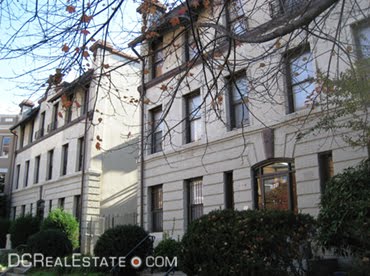 Petworth's newest multi-family, Georgia Commons, will break ground by early next summer, according to developer Jair Lynch Companies (JLC). The 130-unit apartment building with 22,000 s.f. of retail will go up two blocks north of the Petworth Metro station by JLC and development partner AHD Inc. (Affordable Housing Developer). The pair was awarded the contract to build by the National Capitol Revitalization Corporation in 2006. The $38 million project, at 3910 Georgia Ave. NW is being designed by EDG Architects and Frank Schlesinger Associates.
Petworth's newest multi-family, Georgia Commons, will break ground by early next summer, according to developer Jair Lynch Companies (JLC). The 130-unit apartment building with 22,000 s.f. of retail will go up two blocks north of the Petworth Metro station by JLC and development partner AHD Inc. (Affordable Housing Developer). The pair was awarded the contract to build by the National Capitol Revitalization Corporation in 2006. The $38 million project, at 3910 Georgia Ave. NW is being designed by EDG Architects and Frank Schlesinger Associates.JLC is the only developer that has two projects accepted into the eco-friendly pilot program LEED Neighborhood Development, which encourages Smart-Growth, transit-oriented development. According to the Congress for New Urbanism, an anti-sprawl organization with similar goals as Smart Growth, the new LEED program is "a joint venture of the Congress for the New Urbanism, the US Green Building Council, and the Natural Resources Defense Council...just as other LEED systems have improved building efficiency and energy performance, LEED-ND will reward efficient use of land and the building of complete and walkable communities." According to Tania Jackson, Director of External Affairs at Jair Lynch Companies, the new LEED designation targets sustainability on a macro-level instead of just "sticks and bricks." JLC's two LEED ND projects are Georgia Commons and the upcoming Solea, a mixed-use project at 14th and Florida, NW.
When completed, Georgia Commons will hold five-stories of mixed-income residential apartments organized around a central courtyard, sitting atop one level of street retail and two underground parking levels. It will be a contemporary structure, fitting into the Georgia Ave overlay zone, which aims to catalyze retail activity. "It's contextual but contemporary," said Don Tucker, Principal at EDG Architects. The project is a bit behind its original deadline, but is said now to have the financing in place to begin construction within 6 months.


























